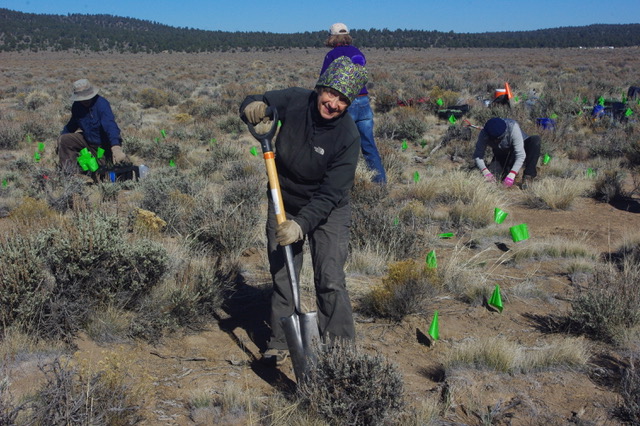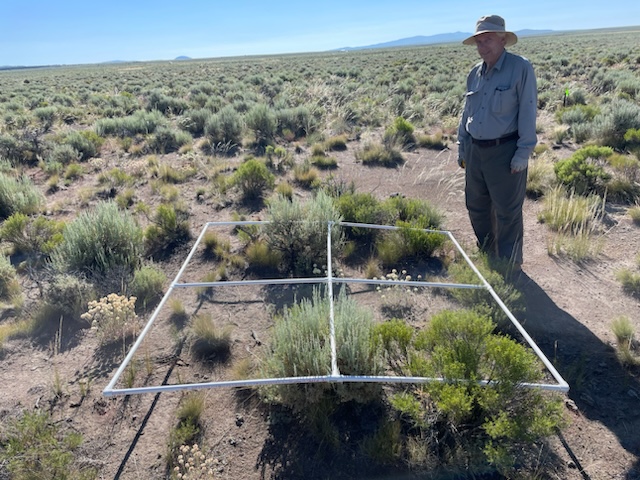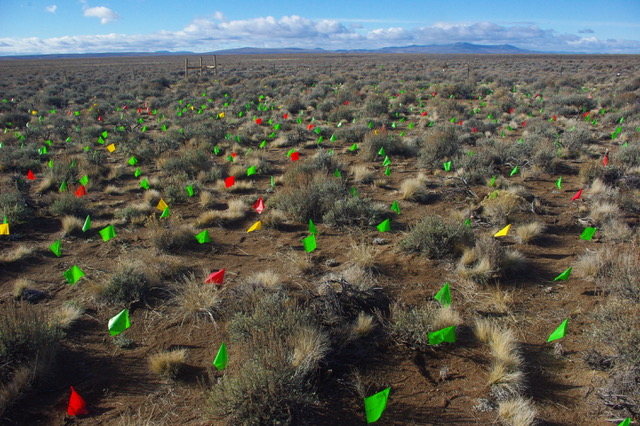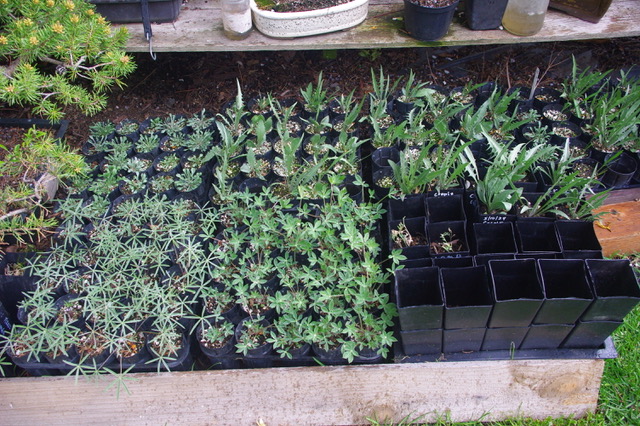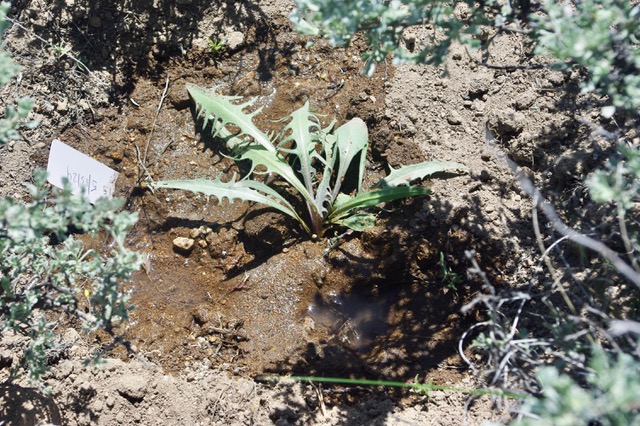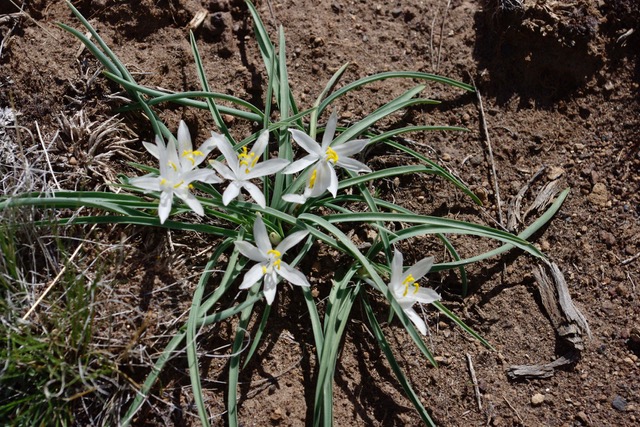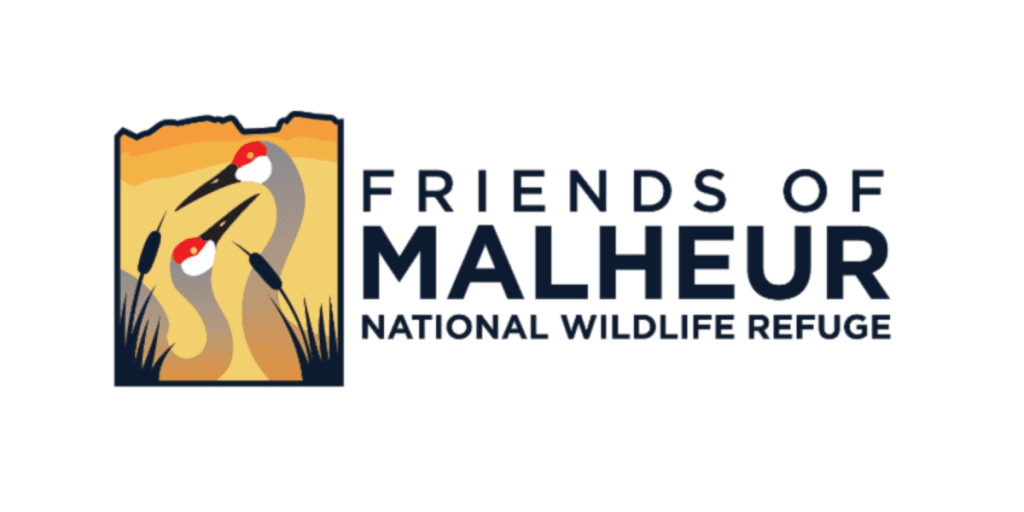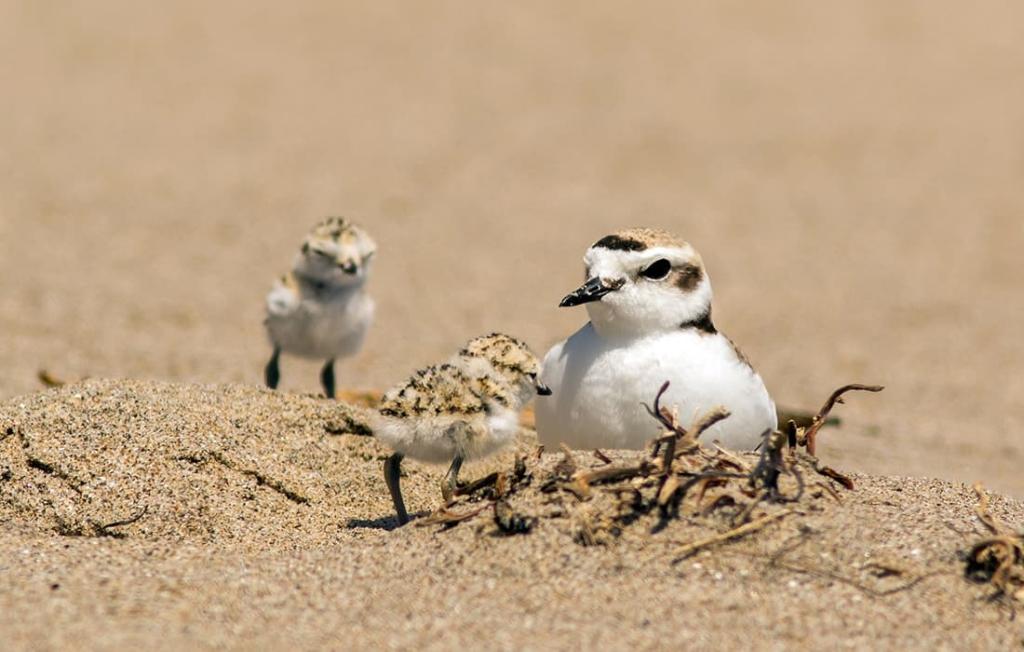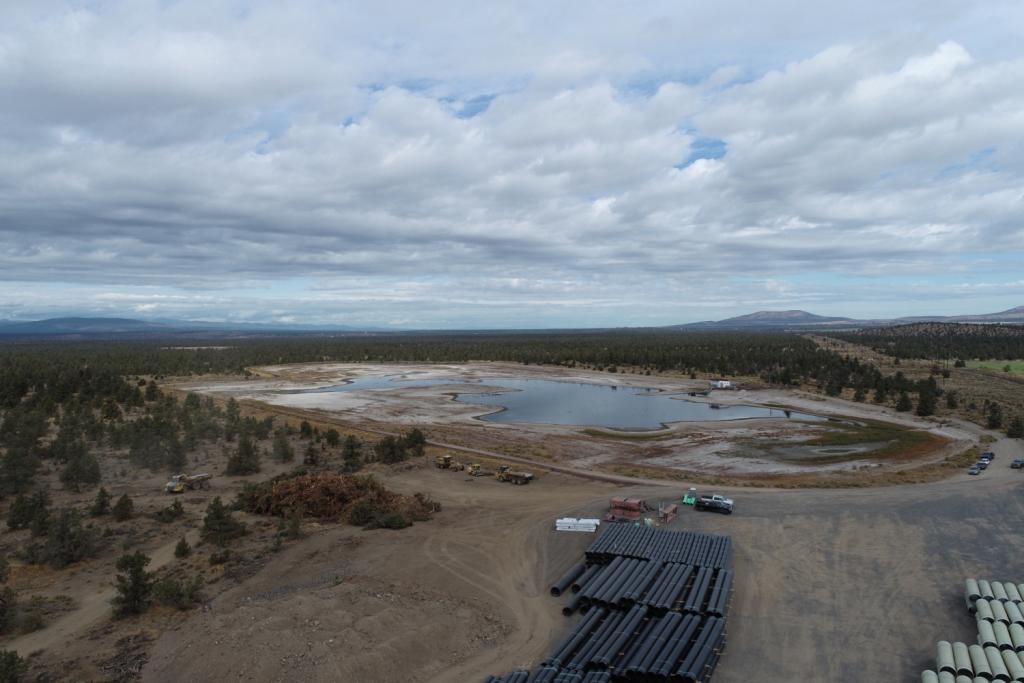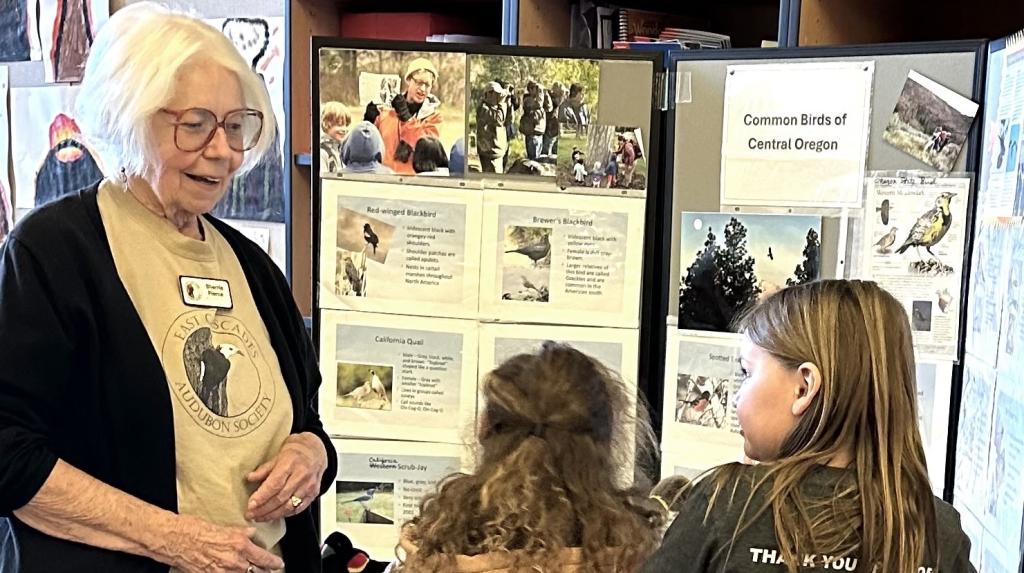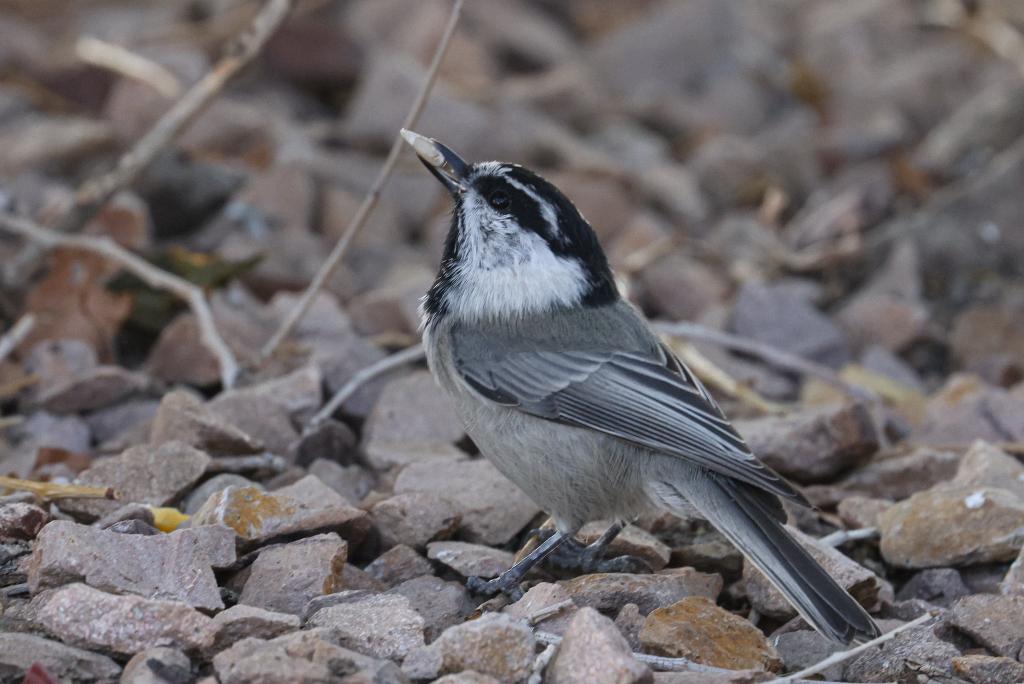Late last October, 2023 about twenty ECBA volunteers rendezvoused at the ECBA Brothers Project, just north of Highway 20 and about forty miles east of Bend, to begin creating the largest demonstration of native forb restoration in the Great Basin. Forbs are herbaceous flowering plants other than grasses, sedges, and rushes.
The overall purpose of the Project is to advance the science of forb restoration to benefit native wildlife of the sage steppe ecosystem, especially the endangered Greater Sage-Grouse. The Project consists of two overlapping phases. The newly initiated demonstration phase draws on lessons learned from the ongoing experimentation phase that began three years ago to compare various methods and techniques for forb restoration. Both phases involve permanently fenced cattle exclosures. Growing cattle and forbs at the exact same time and place is almost impossible, given that cattle devour forbs.
The Project addresses one of the most serious challenges to Sage-grouse conservation. Reversing the chronic declines in Sage-grouse populations will require increasing brood hen fitness and chick survival, both of which absolutely depend on diets of forbs and associated insects. However, forb seedbanks have been depleted by historical overgrazing and neglectful modern range management, at least in Central Oregon. And forb restoration that depends on naturally rebuilding the seedbank will take more time than the Sage-grouse has left. The challenge is to actively restore large enough areas of abundant forbs to actually and persistently increase Sage-grouse production. The Brothers Project will demonstrate a scalable enterprise of forb seed collection, cultivation, and strategic restoration, in the absence of cattle. Growing the enterprise will take public support.
The Brothers Project enjoys logistical and material support from the private land owner, technical field support by the Institute of Applied Ecology, and overall guidance from the ECBA Sage Science Team and its independent science advisors. The Project has been funded by ECBA. Volunteers provide essential help with all aspects of the Project.
For the current demonstration phase, three local nurseries: Great Basin Nursery and Wintercreek Nursery in Bend and Clearwater Native Plant Nursery in Redmond all did superb jobs. They cultivated young forbs from seeds collected at remnant regional populations of eight forb species known to benefit the Sage-grouse. Over the course of two beautiful fall days, the ECBA volunteers carefully planted more than a thousand young forbs. Each planting involved digging a hole just deep and wide enough to accommodate undamaged roots, a carefully constructed slight soil depression around the plant to hold water, watering twice by hand, and marking the exact location of the planting with a small flag. Serious work and good cheer prevailed. One volunteer approached another, smiling, with a watercan in hand.
“What have you got there?”
“The tag says ‘Oregon Sunshine.’”
“Any problems?”
“Not really. Never bared the roots.”
“Nice soil depression.”
“Yeah. I seem to be good at this.”
“Need water?”
“Nope. Got some.”
“And a flag?”
“Yellow ok?”
“Sure.”
“Then we’re good.”
“On to the next one!”
Starting the demonstration phase of the Brothers Project last fall was a calculated risk. The area was especially dry, having been subject to a prolonged moderate to severe drought. But the advisors noted that the selected forb species had evolved resilience to drought conditions, and that the best climate models predicted a wetter than normal winter and spring. On May 13 this year we assessed the survival of the plantings. Nearly 55% of them had survived the winter, and the usually springtime herbivory by insects and small mammals. The sage Science Team and its independent advisors regard the observed survival rate as more than adequate. The assessment also reveals additional lessons to employ during the next plantings. For example, plants seem to benefit from being located at the northern margins of sagebrush canopies, perhaps because of the conservation effect of the canopy shade on soil moisture.
In the meantime, seed collection continues, and local nurseries are getting ready to continue forb cultivation. The Project will be looking for volunteers to help with the next plantings, later this fall. For more information, contact Stu Garrett, Brothers Project Leader, garrettbend@gmail.com


